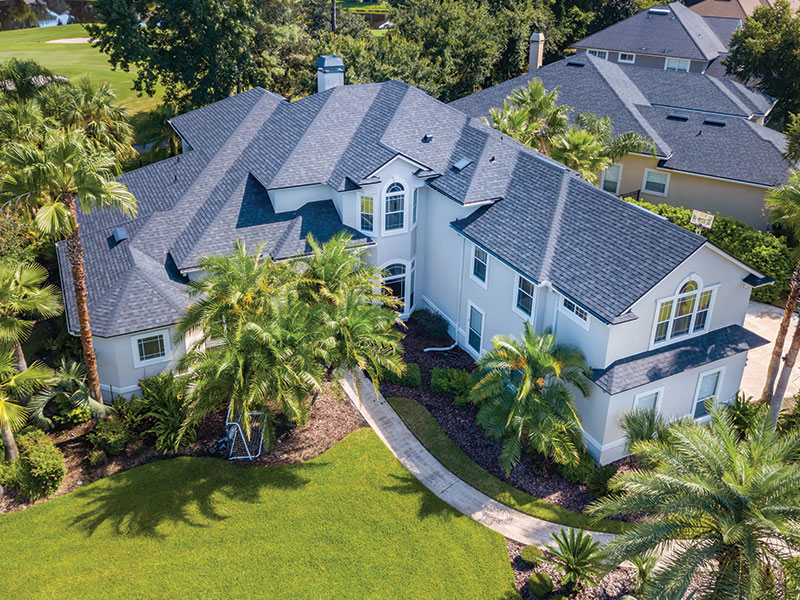You see the roof and start to notice some wear and tear. You may be wondering, is this something that can wait for repair, or is it an emergency? Your roof is one of the most important parts of your home—it’s what protects you from the elements. That’s why it’s so critical to ensure it’s in top shape and to be careful to inspect it after a storm.
This blog post will explore the signs of roof damage and explain our three-step process for repairing storm damage. By the end of this post, you’ll know what to look for—and how to quickly get your property back to normal. Continue reading and learn more!
First, Let’s Take A Look At Some Signs Of Roof Damage
Missing Or Damaged Shingles: After a storm, it’s not uncommon for shingles to be damaged or even missing.
Granules in the gutters are small pieces of asphalt that come off the shingles. If you start to see them in your gutters, it’s a sign that the shingles are starting to deteriorate.
Sagging: Another obvious sign of roof damage is sagging. This is usually caused by water damage or rotting wood. If you see any sagging, it’s important to call a professional roofing company.
Shingle tabs that are curled or cupped: This is a sign that the shingles are past their lifespan.
Daylight Through The Roof Boards: If you can see daylight coming through your roof, it means there’s serious damage.
Cracks In Your Caulk or Sealant: These cracks can allow water to enter your home, causing further damage.
Missing Or Damaged Flashing: Flashing is the metal that’s used to seal around your chimney and vents. If it’s missing or damaged, it needs to be replaced.
Leaks In Your Attic: If you have leaks in your attic, it’s a sure sign that your roof needs repair.
Now that we’ve gone over some signs of roof damage, let’s look the roof damage’s typical causes.
Roof Damage’s Typical Causes
Many things can cause roof damage, not only storms. Here are some others common causes:
Age: Over time, your roof will show wear and tear. Shingles may crack or curl, and tiles may break.
Animals: Birds, squirrels, and other animals can cause damage when they build nests on your roof or try to get inside your home.
Improper installation: If your roof wasn’t installed correctly, it may not be able to withstand the elements as well as it should. This can lead to premature damage.
If you suspect that your roof has been damaged, it’s important to act quickly. The sooner you identify the problem and start repairs, the better.
Repairing Storm Damage: The 3-Steps-Process
- Contact a roofing contractor: If you think your roof has been damaged, reach out to a roofing company.
- Schedule an Inspection: Once you’ve contacted your roofing contractor, they’ll schedule an inspection with you. Some roofing companies have free inspection, so choose the one that best suits your needs.
- Repair Your Roof : A good roofing contractor will work with you to repair your roof. They’ll patch any holes, replace any damaged shingles or tiles, and make sure everything is secure.
The Best Storm Damage Repair Services!
At KayCo Roofing, we’re dedicated to helping you protect your home. We know that storm damage can be a major inconvenience, and we’re here to help you with every step. With our three-step process for repairing storm damage, we’ll have your home back to normal in no time. Call off the research of roofing services or Gainesville roofing contractor, and give us a call today! We would be happy to help you repair your roof and get your home back to normal.
If you have any questions, please don’t hesitate to reach out. We’ll be more than happy to help you through this process. KayCo Roofing is here to serve you! No matter the size of the project, our team of experienced professionals will get the job done right.

